Don't wanna be here? Send us removal request.
Text
Gaganyaan Mission: ISRO, Indian Navy undertake trials for Crew

ISRO's Gaganyaan is a crewed space mission. It is scheduled to be released in 2024. Indian astronauts were trained by Russia's ROSCOSMOS to fly to space as part of the mission. The crew module was designed and built by HAL. The DRDO will provide food for the astronauts, parachutes, and a fire suppression system, as well as monitor the crew's health while in space. Recently, the Indian Navy and ISRO conducted recovery trials alongside the Indian Navy. ISRO's Water Survival Test Facility provided the simulation.
About the Recovery trials
The trials were held at the Water Survival Test Facility in Kochi.
The test facility created a crew recovery model in order to conduct the trials. The model will simulate the center of gravity, mass, outer dimensions, and so on.
The recovery trial took place in a closed pool.
The Function of the Water Survival Test Facility
The facility prepared the astronauts to escape from a crashed aircraft. It simulated different scenarios in which the astronauts escaped safely. It simulated various sea states, day and night conditions, and environmental conditions.
Significance
The final step in a human space flight program is safe recovery. Recovery must be completed within a reasonable time frame. As a result, it is critical that the recovery trials be carried out in a variety of scenarios. Extensive practice is also required.
Click Here to Read More About Current Events
0 notes
Text
Triyuginarayan Temple
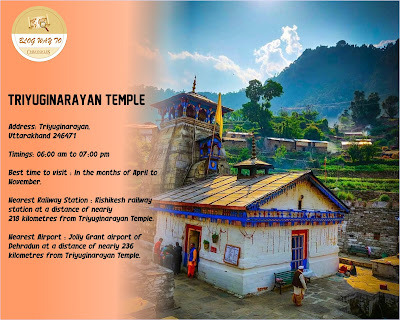
Triyuginarayan Temple is a Hindu temple in the village of Triyuginarayan in the district of Rudraprayag in the Indian state of Uttarakhand. The Triyuginarayan temple is entirely dedicated to Lord Vishnu, but it is best known as the location of Lord Shiva and Parvati's marriage. This temple houses a 2-foot statue of Lord Vishnu (Narayana), as well as Goddess Lakshmi and Saraswati, the Goddess of Knowledge. Triyuginarayan Temple is a popular and significant Hindu pilgrimage site.
The name 'Triyuginarayan' is composed of three words. These are the definitions: 'Tri' means three. The meaning of 'yugi' refers to the passage of time. Lord Vishnu's names are Yuga and Narayan. As a result, this location is known as Triyugi Narayan. The era is divided into four periods in Sanatan Dharma. These are the four eras: Satya Yuga, Treta Yuga, Dwapar Yuga, and the current Kali Yuga.
Structure of the Triyuginarayan Temple
Triyuginarayan Temple's architectural style is similar to that of Kedarnath Temple. This temple resembles the Kedarnath temple and thus attracts a large number of devotees. The current temple is also known as the 'Akhand Dhuni Temple'. It is thought to have been created by Adi Shankaracharya. Several temples in the Uttarakhand region are attributed to Adi Shankaracharya. A 2-foot statue of Lord Vishnu and Goddess Lakshmi stands in the temple.
Rea More click Here
0 notes
Text
Ambika Kalna – The Temple Town

The debate is still going on. Which is Bengal's most important temple town, Bishnupur or Ambika Kalna? Bishnupur is more popular with tourists because it has connecting trains that provide the luxury of traveling in an AC Chair car and many standard lodging facilities. Unfortunately, the only way to get to Ambika Kalna by train is to take an unreserved local train. There is one Intercity Express with AC Chair Car service, but it only arrives in the afternoon and is not suitable for a day tour. There are only two or three lodging options. To this day, the best way to get to Ambika Kalna is by car. The journey takes approximately 2.5 to 3 hours, and you can easily cover the city in a day trip.
When it comes to terracotta art variety, Bishnupur is far ahead of any temple town. However, when it comes to the variety of temple structures, Ambika Kalna comes out on top. You name a Bengal temple structure style, and this town in the Burdwan district has it on display. Also, if you're looking for temples with terracotta panels, Bishnupur has only four of them. The temple rests in Bishnupur are made of laterite stones. In contrast, the number of "terracotta temples" in Ambika Kalna is more than double that of Bishnupur.
AMBIKA KALNA HISTORY
Read More
0 notes
Text
WhatsApp is the most accessible app for the Public Works Department in India (Gk Today Current Affair)
The Vidhi Centre for Legal Policy is a legal research think tank. The organization recently published a report on software application popularity in India. The title of the report is "Making the Digital Ecosystem Disabled Friendly". According to the organization, WhatsApp is the most accessible app for disabled people.
About the report
The organization assessed applications in various categories such as e-commerce, online payments, transportation, food delivery, and so on. The report was created in accordance with the Web Content Accessibility Guidelines (WCAG).
What exactly is WCAG?
The Web Accessibility Initiative developed the WCAG. W3C, or the World Wide Web Consortium, launched it. The main key to WWW is the W3C. (World Wide Web). The organization's headquarters are in the United States. W3C's primary goal is to develop web standards.
Other apps that have been audited
Other apps audited by the think tank included OLA, UBER, TELEGRAM, FLIPKART, AMAZON, ZOMATO, SWIGGY, PAYTM, PHONE PE, and others.
The apps were classified as "highly accessible," "moderately accessible," or "less accessible" after an audit. WhatsApp was extremely easy to use.
Tags
0 notes
Text
Gaganyaan Mission: ISRO, Indian Navy undertake trials for Crew

ISRO's Gaganyaan is a crewed space mission. It is scheduled to be released in 2024. Indian astronauts were trained by Russia's ROSCOSMOS to fly to space as part of the mission. The crew module was designed and built by HAL. The DRDO will provide food for the astronauts, parachutes, and a fire suppression system, as well as monitor the crew's health while in space. Recently, the Indian Navy and ISRO conducted recovery trials alongside the Indian Navy. ISRO's Water Survival Test Facility provided the simulation.
About the Recovery trials
The trials were held at the Water Survival Test Facility in Kochi.
The test facility created a crew recovery model in order to conduct the trials. The model will simulate the center of gravity, mass, outer dimensions, and so on.
The recovery trial took place in a closed pool.
The Function of the Water Survival Test Facility
The facility prepared the astronauts to escape from a crashed aircraft. It simulated different scenarios in which the astronauts escaped safely. It simulated various sea states, day and night conditions, and environmental conditions.
Significance
The final step in a human space flight program is safe recovery. Recovery must be completed within a reasonable time frame. As a result, it is critical that the recovery trials be carried out in a variety of scenarios. Extensive practice is also required.
0 notes
Text
Indus Water Treaty
Reading Time - 3 minutes
The Indus Waters Treaty was signed on September 19, 1960, between India and Pakistan and was mediated by the World Bank. The treaty established and defined both countries' rights and obligations in relation to the use of the Indus River system's waters.
The Indus River originates in China's southwestern Tibet Autonomous Region and flows through the disputed Kashmir region before entering Pakistan and draining into the Arabian Sea. Numerous tributaries, most notably those of the eastern Punjab Plain—the Jhelum, Chenab, Ravi, Beas, and Sutlej rivers—join it. Since time immemorial, the Indus River system has been used for irrigation.Around 1850, modern irrigation engineering work began. Large canal systems were built during British rule in India, and old canal systems and inundation channels were revived and modernized. However, British India was partitioned in 1947, resulting in the establishment of an independent India and West Pakistan (later called Pakistan).As a result, the water system was divided, with the headworks in India and the canals running through Pakistan. On April 1, 1948, after the short-term Standstill Agreement of 1947 expired, India began withholding water from canals that flowed into Pakistan. In exchange for annual payments, the Inter-Dominion Accord of May 4, 1948, required India to provide water to the Pakistani portions of the basin. This, too, was meant to be a stopgap measure, with further talks to follow in the hopes of reaching a permanent solution.
However, negotiations quickly came to a halt, with neither side willing to compromise. David Lilienthal, former head of both the Tennessee Valley Authority and the United States Atomic Energy Commission, visited the region in 1951 to research articles for Collier's magazine. He proposed that India and Pakistan work together to develop and manage the Indus River system, possibly with World Bank assistance and financing. Eugene Black, the World Bank's president at the time, agreed. Engineers from each country formed a working group at his suggestion, with World Bank engineers providing advice.However, political considerations prevented even these technical discussions from reaching an agreement. The World Bank submitted a proposal for a solution to the impasse in 1954. In September 1960, Indian Prime Minister Jawaharlal Nehru and Pakistani President Mohammad Ayub Khan signed the Indus Waters Treaty after six years of negotiations.
The treaty gave Pakistan the waters of the western rivers, Read More
0 notes
Text
Nazism and the Rise of Hitler Class 9

We've all heard the story about an eleven-year-old German boy who overheard his parents debating whether to commit suicide or kill the entire family. 'Now the allies will do to the crippled and Jews what we did to them,' his father predicted. His father committed suicide the next day in his office. His father was a Nazi who supported Adolf Hitler. Who exactly was Hitler? How did he rule Germany, and why did he despise Jews? Please share your thoughts in the comments section below.
What is Nazism?
After World War One, the fascist political movement known as the Nazis emerged in Germany under the leadership of Adolf Hitler. While severely restricting individual freedom, Nazism promoted extreme nationalism, militarism, and expansionism. The Nazis believed that Germans were descended from Aryans. They contended that Jews, Slavs, and other ethnic minorities had no reason to live in Germany because they were genetically inferior. Nazism was a political ideology that opposed democratic political ideologies such as democracy, communism, socialism, and others. In theory and practice, they were opposed to liberalism and any form of individualism. Nazis promised to build a peaceful, orderly, and prosperous society for Germans. They brought war, terrorism, and mass murder to the world.
Hitler prepared Germany for war after seizing political power through dubious means in 1933. He rearmed the country, violating the Treaty of Versailles both covertly and overtly. He formed an alliance with Mussolini, Italy's fascist leader. Japan later joined this alliance, creating the Rome-Berlin-Tokyo Axis.. Nazi propaganda was secretly spread throughout India by the Axis countries, especially Nazi Germany, as war clouds began to gather over the continent of Europe.
Read also Revolt of 1857
The beginnings of the Weimar Republic
Read More
0 notes
Text
HAWA MAHAL JAIPUR, INDIA (ENTRY FEE, TIMINGS, LOCATION , IMAGES ,HISTORY & BUILT BY)

Reading Time : 10 Minutes
Hawa Mahal Jaipur Entry Fee
₹50 per person for Indians ₹200 per person for Foreign Tourists
Hawa Mahal Jaipur Timings
Day Timing
Monday 9:00 am – 5:00 pm
Tuesday 9:00 am – 5:00 pm
Wednesday 9:00 am – 5:00 pm
Thursday 9:00 am – 5:00 pm
Friday 9:00 am – 5:00 pm
Saturday 9:00 am – 5:00 pm
Sunday 9:00 am – 5:00 pm
Hawa Mahal Jaipur Address: Hawa Mahal Rd, Badi Choupad, J.D.A. Market, Pink City, Jaipur, Rajasthan, 302002, India
Read also History of Qutub Minar
Welcome to the Hawa Mahal, Jaipur's Famous Pink Sandstone Architectural Wonder.
The regalia of Jaipur's Hawa Mahal emerges as the day breaks. There is an effervescence of a gorgeous structure that showcases itself on the streets of Badi Choupad in the Pink City, with thousands of pigeons flocking the airy windows. For decades, the Hawa Mahal has captivated travelers from all over the world. It is still one of the most beautiful masterpieces of yesteryear, with intricate carvings and delicate architecture.
It exudes a charm unrivaled by any other structure seen in today's world, having been carved by hand, stone by stone. We have progressed from admiring architecture to studying its patterns solely because of its magnificent architecture from a bygone era.
Hawa Mahal Jaipur, known for its numerous honeycomb-shaped windows, has always piqued the interest of both domestic and international visitors. So, what makes the Hawa Mahal so unique?
Read More
#Reading Time : 10 Minutes#Hawa Mahal Jaipur Entry Fee#₹50 per person for Indians#₹200 per person for Foreign Tourists#Hawa Mahal Jaipur Timings#Day#Timing#Monday#9:00 am – 5:00 pm#Tuesday#Wednesday#Thursday#Friday#Saturday#Sunday#Hawa Mahal Jaipur Address: Hawa Mahal Rd#Badi Choupad#J.D.A. Market#Pink City#Jaipur#Rajasthan#302002#India#Read also History of Qutub Minar
0 notes
Text
Qutub Minar - Qutub Minar Timing - Who Built Qutub Minar

Qutub Minar
The Qutub Minar, also known as Qutb Minar and Qutab Minar, is a tall monument in Delhi that never ceases to enthrall tourists. Indeed, why not! After all, it's not every day that you stumble upon a work of art that claims of being the highest brick tower in the world and has remained such for more than 800 years. Isn't it good enough of a justification to add this popular tourist destination to your itinerary while you're making travel plans and reservations for hotels in Delhi?
But is that all there is to say about this ancient Delhin monument? Naturally not! Everything about this building is breathtaking, from its storied past to its magnificent architecture. This website provides information on Qutub Minar's history, architecture, opening hours, admission price, and other facts.
Qutub Minar in Hindi - Qutub Minar Information in Hindi
History of Qutub Minar
The five-story Qutub Minar in Delhi was erected over four centuries by several kings. Qutb-ud-din Aibak, who established the Delhi Sultanate, probably constructed it as a triumph tower around 1192. The minaret carries his name, even though he was only able to build the first floor. Shams-ud-din Iltutmish added three further levels to the structure in the year 1220. A lightning strike in 1369 damaged the top floor of the structure. The entrance to Qutub Minar was erected by Sher Shah Suri, but Firoz Shah Tughlaq restored it and added the fifth and last story to the tower.
The tower once again sustained substantial earthquake damage in 1803, about 300 years later. Major Robert Smith, a soldier in the British Indian Army, renovated the structure in 1828. The tower's sixth story was added when he built a pillared dome to occupy the top of the fifth floor. The extra floor was later reinstalled adjacent to the minaret after Henry Hardinge, the then-Governor-General of India, ordered its removal in 1848. Due to an accident that resulted in the deaths of 47 people within, access to the tower has been restricted since 1981.
Read More
0 notes
Text
The French Revolution | History , Timeline , Causes , Class 9 Chapter

The French Revolution was a period in French history during which the people overthrew the monarchy and took control of the government.
French revolution was started in 14 July 1789 and end in 1799 lasted for 10 years
Storming of Bastille was a begining of French revolution
The French estates
Before the French Revolution, the people of France were divided into social groups called "Estates." The First Estate included the clergy (church leaders), the Second Estate included the nobles, and the Third Estate included the commoners.

During 18th century French society was divided into Three Estates.
I. First estate comprised of clergy or priests of churches.
II. Second estate comprised of nobility which includes high rank officials and feudal lords.
III. The third estate comprised of rest 90% of population of France which includes peasants, workers, artisans, lower-rank court officials, lawyers, landless labour, servants etc.
All the taxes were to be paid by third estate while other two enjoyed various privileges and has full authority to impose taxes.
France was the most populated nation in Europe during this time and had been growing in wealth and prestige since the time of King Louis XIV. But this economic growth wasn’t visible as the country was still very backward socially and politically.
In 1774 Louis XVI ascended the throne of France.
I. He belongs to the BOURBON family of kings of France.
II. He was married to Marie Antoinette of Austria.
III. Empty treasury due to prolong war's debt and extravagant lifestyles of his ancestors along with the cost of support to American war of Independence forced him to increase tax to meet the demand.
IV. Subsistence crisis, occurred frequently during old regime, added the discontentment among masses.
Read More Click Here
0 notes
Text
ताजमहल का इतिहास


ताजमहल का इतिहास
ताजमहल एक लुभावनी सफेद संगमरमर का मकबरा है जिसे मुग़ल बादशाह शाहजहाँ ने अपनी प्यारी पत्नी मुमताज़ महल के लिए बनवाया था। भारत में आगरा के पास यमुना नदी के दक्षिणी तट पर स्थित, ताजमहल को बनने में 22 साल लगे और अंत में 1653 में पूरा हुआ।
विश्व के नए अजूबों में से एक माना जाने वाला यह उत्कृष्ट स्मारक आगंतुकों को अपनी समरूपता, संरचनात्मक सुंदरता, जटिल सुलेख, जड़े हुए रत्न और शानदार बगीचे से चकित करता है। में सिर्फ एक स्मारक से ज्यादा
शाहजहां और मुमताज की प्र��म कहानी
1607 में महान अकबर के पोते शाहजहाँ पहली बार अपनी प्रेयसी से मिले थे। उस समय, वह अभी तक मुगल साम्राज्य के पांचवें सम्राट नहीं थे। सोलह वर्षीय राजकुमार खुर्रम, जैसा कि उन्हें तब कहा जाता था, शाही बाजार के चारों ओर घूमते थे, उच्च श्रेणी के परिवारों की लड़कियों के साथ छेड़खानी करते थे जो बूथों पर काम करते थे।
इनमें से एक बूथ पर प्रिंस खुर्रम की मुलाकात 15 साल की अर्जुमंद बानू बेगम से हुई, जिनके पिता जल्द ही प्रधानमंत्री बनने वाले थे और जिनकी मौसी की शादी प्रिंस खुर्रा से हुई थी
27 मार्च, 1612 को राजकुमार खुर्रम और उनकी प्रेयसी, जिन्हें उन्होंने मुमताज महल (“महलों में से एक चुना”) नाम दिया, का विवाह हुआ। मुमताज महल खूबसूरत होने के साथ-साथ समझदार और कोमल हृदय भी थी। जनता उससे बहुत प्रभावित थी, किसी छोटे हिस्से में नहीं क्योंकि वह लोगों की परवाह करती थी। उसने परिश्रम से विधवाओं और अनाथों की सूची बनाई ताकि यह सुनिश्चित किया जा सके कि उन्हें भोजन और पैसा दिया जाए। इस दंपति के एक साथ 14 बच्चे थे, लेकिन केवल सात बच्चे ही शैशवावस्था से गुजरे थे। यह 14वें बच्चे का जन्म था जो मार डालेगा
यदि आप स्मारक के बारे में अधिक पढ़ना चाहते हैं तो यहां क्लिक करें
मुमताज महल को क्या हुआ?
शाहजहाँ के शासन में तीन साल, 1631 में, खान जहाँ लोदी के निर्देशन में एक विद्रोह जारी था। सूदखोर को उखाड़ फेंकने के लिए, शाहजहाँ ने आगरा से लगभग 400 मील दूर दक्कन में अपनी सेनाएँ भेजीं।
बेहद गर्भवती होने के बावजूद मुमताज महल हमेशा की तरह शाहजहाँ के पक्ष में खड़ी रही। उसने 16 जून, 1631 को शिविर के मध्य में एक भव्य सुसज्जित तंबू में एक स्वस्थ बच्ची को जन्म दिया। पहले तो सब कुछ अच्छा लगा, लेकिन जल्द ही मुमताज महल का निधन हो गया।
अपनी पत्नी की हालत का पता चलते ही शाहजहाँ ने अपनी पत्नी के पास दौड़ लगाई। मुमताज महल का निधन 17 जून की तड़के हुआ, उनकी बेटी के जन्म के बमुश्किल एक दिन बाद।
मुमताज महल को घर लाना
0 notes
Text
History of Taj Mahal

The Taj Mahal is a breathtaking white-marble mausoleum commissioned by Mughul emperor Shah Jahan for his beloved wife, Mumtaz Mahal. Located on the southern bank of the Yamuna River near Agra, India, the Taj Mahal took 22 years to build and finally reached completion in 1653.
This exquisite monument, considered one of the World's New Wonders, astounds visitors with its symmetry, structural beauty, intricate calligraphy, inlaid gemstones, and magnificent garden. More than just a memorial in the name of a spouse, the Taj Mahal was a declaration of lasting love from Shan Jahan to his departed soulmate.
The Love Story
It was in 1607 that Shah Jahan, grandson of Akbar the Great, first met his beloved. At the time, he was not yet the fifth emperor of the Mughal Empire. Sixteen-year-old Prince Khurram, as he was then called, flitted around the royal bazaar, flirting with the girls from high-ranking families that staffed the booths.
At one of these booths, Prince Khurram met Arjumand Banu Begum, the 15-year-old young woman whose father was soon to be the prime minister and whose aunt was married to Prince Khurram’s father. Although it was love at first sight, the two were not allowed to marry right away. Prince Khurram first had to marry Kandahari Begum. He later took a third wife as well.
On March 27, 1612, Prince Khurram and his beloved, to whom he gave the name Mumtaz Mahal (“chosen one of the palaces”), were married. Mumtaz Mahal was beautiful as well as smart and tender-hearted. The public was enamored with her, in no small part because she cared for the people. She diligently made lists of widows and orphans to ensure that they were given food and money. The couple had 14 children together but only seven lived past infancy. It was the birth of the 14th child that would kill Mumtaz Mahal.
If you want to Read more about Monument Click Here
0 notes
Text
Revolt of 1857

Reading Time: 10 Minutes
In the History of India, the year 1857 Has great importance. During this year, there occurred a major revolt in India, which shook the very foundations of British rule in India. The English had almost completed their conquests in India by 1856. They could not carry on their rule peacefully. These revolts broke out due to the dissatisfaction amongst the people against the government of the Company and its misrule.
The Revolt of 1857
Date- 10 May 1857 – 1 November 1858
(1 year and 6 months)
Location -India (Uttar Pradesh)
Result -British victory
1. Suppression of revolt
2. Formal end of the Mughal Empire
3. End of Company rule in India
4. Transfer of rule to the British Crown
1857 is also known as the Sepoy Mutiny, the Indian Mutiny, the Great Rebellion, the Revolt of 1857, the Indian Insurrection, and the First War of Independence. Is given by different Indian Writers.
The great uprising of 1857 was an outburst of nationalist sentiments. Indian rulers and the people had not accepted the company's rule. No doubt, the uprising was not well organized and it was premature, but the nationalist character of the revolt cannot be underestimated. So we can call it India's First War of Independence.
The Indian Rebellion of 1857 was an armed uprising, mainly concentrated in north-central India, against the British East India Company which occurred between early 1857 and mid-1858.
Revolt of 1857 started by Mangal Pandey was a Hindu sepoy in the British army. He was the first freedom fighter in India. He is widely considered to be the spark that ignited the revolt. Pandey was hanged by the British in 1857. He is considered to be one of the first freedom fighters of the Revolt of 1857.
Revolt of 1857 happen because when sepoys refused to use new rifle cartridges, which were thought to be lubricated with grease containing a mixture of pigs' and cows' lard and thus religiously impure for Muslims and Hindus.
The main leader of the Revolt of 1857 was Bahadur Shah Zafar. He declared his support for the mutiny and accepted the title of the leader of the mutiny.
If you want to Read more about Monument Click Here
Causes of the Revolt/ First War Independence
0 notes
Text
Konark Sun Temple in Hindi | कोणार्क सूर्य मंदिर: इतिहास, वास्तुकला और सूचना

पढ़ने का समय: 5 मिनट
निर्मित — 13वीं शताब्दी
राज्य — ओडिशा
जिला — पुरी
देवता — सूर्य
शैली — कलिंग शैली
गुण — राजा नरसिंह देव
वास्तुकला — शिखर, ऑडियंस हॉल, डांस हॉल टॉवर
विशेषता — सूर्य देव सूर्य के रथ, 24 पहियों को छह घोड़ों की टीम के नेतृत्व में प्रतीकात्मक डिजाइन से सजाया गया है।
“देश के सात अजूबों में से एक”
“यूनेस्को विरासत विश्व स्थल।
“12 पहिए साल के 12 महीनों का प्रतिनिधित्व करते हैं”
“कोई सूरज नहीं होगा और इसलिए सूर्योदय तक कोई छाया नहीं होगी”।
महत्वपूर्ण संकेत
मंदिर को इसके महत्व को दर्शाने के लिए भारतीय ₹ 10 के करेंसी नोट के पीछे दर्शाया गया है।
मंदिर का निर्माण लाल रंग के बलुआ पत्थर से किया गया है
इस मंदिर की दीवारों पर तरह-तरह की मूर्तियां और नक्काशी की गई है।
कोणार्क मंदिर में प्रवेश निःशुल्क है।
कोणार्क मंदिर भारत का एक प्रसिद्ध मंदिर है।
Read more अधिक पढ़ें
0 notes
Text
Harihar Fort
Harihar Fort

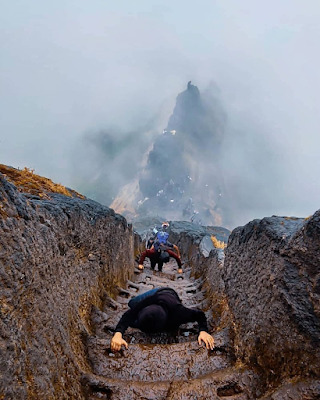
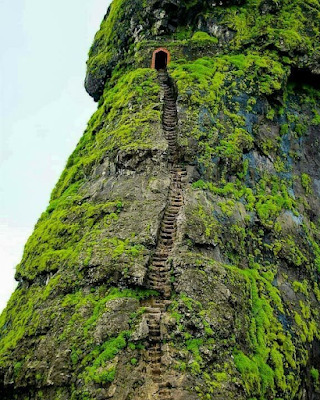
Dynasty - Yadava (Seuna)Type - Hillfort Material - Stone/Bricks Tourist Attraction for Trekking Location - Maharashtra Nashik District Harihar Fort was built during (Yadava) DynastyHeight - 5400 feet.
Maharashtra is blessed with beautiful fort is almost each & every district. Harihar fort is one of them, lush green hills of Sahyadri also known as western ghats. So step slope of intrinsic peculiar shaped rock - cut steps.
Read more
0 notes
Text
History of Sultan Osman Ghazi and Ottoman Empire

Osman Ghazi was the founder of the Ottoman Empire, namely first of the sultans. He was born in sogut located in bitecik province.
He participated in battles with his father starting from young age.
Ghazi means veteran soldier in Turkish
Osman always loved and respected Sheikh Edebali & attended his religious turks.
Sheikh Edebali who is said to be descended from Prophet Muhammed, was the first mufti of the Ottoman Empire.
Osman Ghazi ruler of a Turkmen principality in northwestern Anatolia who is regarded as the founder of the Ottoman Turkish State derived from the Arabic Form (4th man).
0 notes
Text
History of Golden Temple


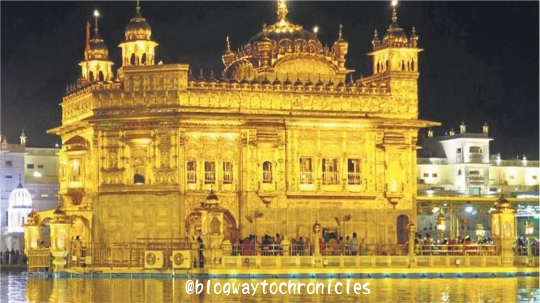

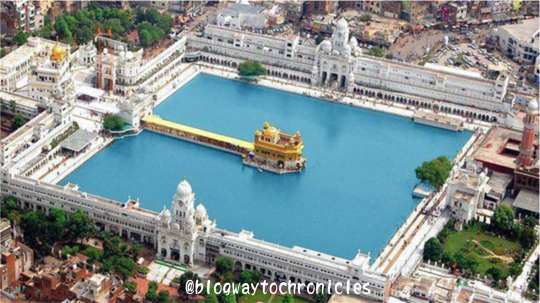



Affiliation -Sikhism District - Amritsar State - Punjab Built by Started - 1588 -Guru Arjan Completed- 1604 Climate - Summer are short,humid and winters are cold dry. Activities - Eat with others in huge dining hall, Help in the kitchen.
192 years ago Maharaj Ranjit Singh the Sikh ruler denoted.
The Golden temple also known as Harmandir Sahib 'abode of God'. The Temple was completed by the fourth Sikh Guru Guru ram das 1577.
Read more
1 note
·
View note